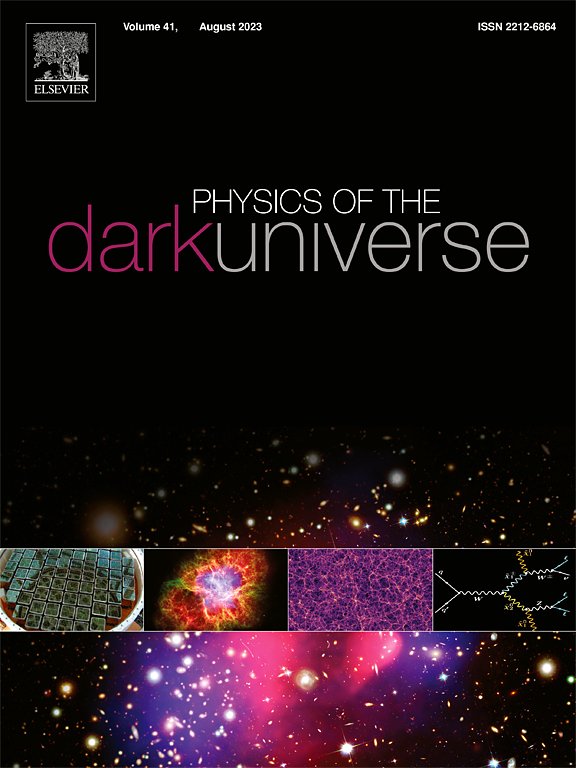普朗克恒星残余物可能是暗物质吗?
IF 5
2区 物理与天体物理
Q1 ASTRONOMY & ASTROPHYSICS
引用次数: 0
摘要
我们探索了量子引力效应下引力坍缩的最终状态,并提出通过非奇异弹跳形成的普朗克恒星残余物(PSR)可以作为可行的暗物质候选者。在环量子宇宙学的框架内,我们模拟了均匀物质分布的坍缩,并表明经典奇点被普朗克密度处的量子弹跳所取代。通过使用以色列结条件分析匹配弗里德曼- lema本文章由计算机程序翻译,如有差异,请以英文原文为准。
Could planck star remnants be dark matter?
We explore the end state of gravitational collapse under quantum gravity effects and propose that Planck Star Remnants (PSR), formed via nonsingular bounces, could serve as viable dark matter candidates. Within the framework of Loop Quantum Cosmology, we model the collapse of a homogeneous matter distribution and show that the classical singularity is replaced by a quantum bounce at the Planck density. By analytically matching the Friedman–Lemaître–Robertson–Walker (FLRW) interior to an exterior Schwarzschild spacetime using the Israel junction conditions, we demonstrate that the bounce remains causally hidden from external observers, avoiding any observable re-expansion. This naturally leads to the formation of stable, non-radiating PSR, whose radius coincides with the Schwarzschild radius when the black hole mass approaches the Planck mass as a result of Hawking evaporation. We suggest that such remnants may originate from evaporating primordial black holes in the early universe, and estimate the relic abundance needed for PSR to account for the observed dark matter density. We also discuss some crucial differences between PSR and previous proposals of Planck mass relics. The scenario is shown to be consistent with existing astrophysical and cosmological constraints, offering a unified framework connecting quantum gravitational collapse, and the nature of dark matter.
求助全文
通过发布文献求助,成功后即可免费获取论文全文。
去求助
来源期刊

Physics of the Dark Universe
ASTRONOMY & ASTROPHYSICS-
CiteScore
9.60
自引率
7.30%
发文量
118
审稿时长
61 days
期刊介绍:
Physics of the Dark Universe is an innovative online-only journal that offers rapid publication of peer-reviewed, original research articles considered of high scientific impact.
The journal is focused on the understanding of Dark Matter, Dark Energy, Early Universe, gravitational waves and neutrinos, covering all theoretical, experimental and phenomenological aspects.
 求助内容:
求助内容: 应助结果提醒方式:
应助结果提醒方式:


